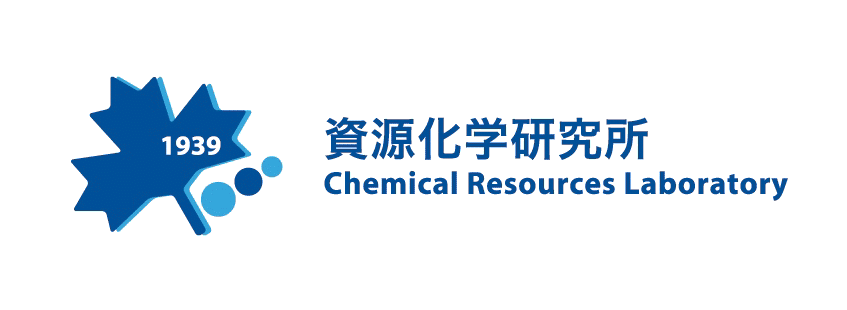r_[ο
Dr. Gratama@`BACKGROUND
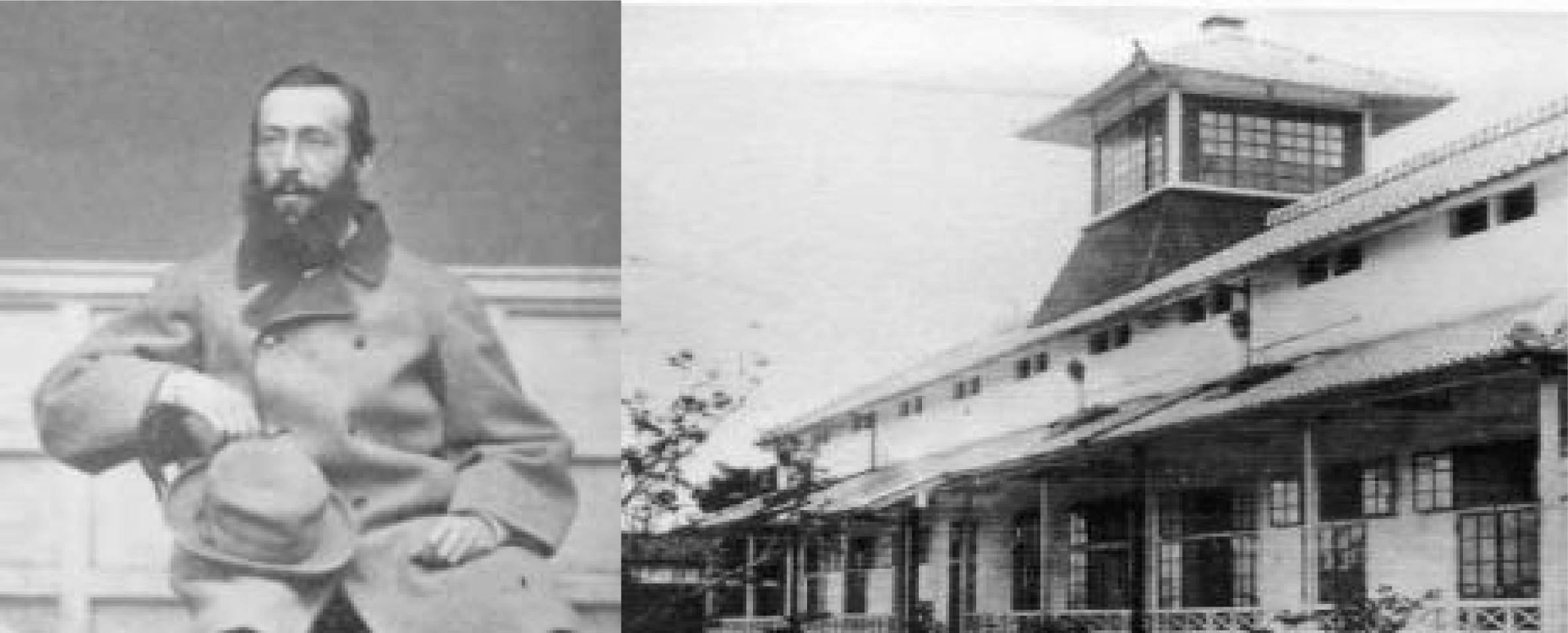
Dr. Gratama
The Dutch chemist Dr. Koenraad Wolter Gratama (1831-1888) stayed in Japan for 5 years from 1866 to 1871, during a violent period when the government of Japan changed from the Edo bakufu to the Meiji government in 1868.
In 1869, his idea for the foundation of a chemistry school 'Seimi-kyoku' (a 'Chemie-school' in Dutch) with a chemistry laboratory was realized in front of Osaka Castle. He taught chemistry and performed chemical experiments using chemical reagents and apparatus that he brought from the Netherlands. The Seimi-kyoku became the commemorative school that first introduced modern chemistry with both lectures and experiments in Japan.
In the year 2000 in Osaka, the place of the Seimi-kyoku, a Workshop that crowns the name of Dr. GRATAMA was being held as one of the celebration activities within the commemoration of the 400 years of relations between Japan and the Netherlands, in close cooperation with Osaka University, Osaka National Research Institute, Delft University of Technology, Utrecht University and under the auspices of The Royal Netherlands Academy of Arts and Sciences.
Koenraad Wolter Gratama, Founding Father of Chemistry in Japan
Commemorative Lecture by
Tetsuo Shiba
Emeritus Professor, Osaka University
In 1868, the first year of the new Meiji Government starting the modernization of Japan, Dutch chemist Koenraad Wolter Gratama came to Osaka to found a new school of chemistry, Seimi Kyoku to the west of Osaka Castle. Gratama planned to teach fundamental chemistry as a key field of study for the modernization because most people did not understand how important and essential the study of chemistry would be for the development of this country.

Even during Japan's long isolation through the Edo Period, cultural exchange with the Netherlands continued with the acceptance of up-to-date information on the progress of Western culture. This laid the basis for the successful movement in Japan toward modernization.
From the end of the eighteenth century, a number of Japanese endeavored to absorb the fruits of Western culture through translations of Dutch books imported via Nagasaki. Their learning began with medical science, and then extended to other fields such as astronomy, botany, chemistry, and physics. The translations were mainly done at the Yousho Shirabesho, Governmental Institute for Investigation of Foreign Books, in Edo since 1855. This was the only activity through which Western culture could be introduced to Japan at that time.
On the other hand, Seimi Kyoku and its sister school Osaka Medical School offered direct teaching of Western sciences to Japanese students by Dutch teachers Gratama and Bauduin through lectures and practical experiments. The system of education in Osaka was an extension of the instruction of Western culture initiated forty years earlier by P. F. von Siebold at Narutaki Jyuku in Nagasaki. This style of learning was epoch-making for the Japanese people.
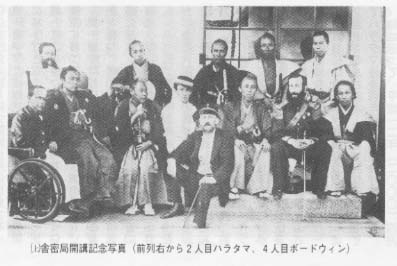
Gratama arrived in Nagasaki in 1866 as the first chemist invited to Japan. The invitation was realized by the advice of Bauduin, teacher of Seitoku Kan, Nagasaki Medical School, to the Edo Government. Bauduin emphasized an importance of chemistry and physics as the foundations of education for medical science at Seitoku Kan.
In 1857, the Edo Government planned to found a new school in Edo, and invited Bauduin and Gratama there. However, the Government itself collapsed in a political revolution before realization this plan. The Meiji Government decided to continue the plan to contract these two Dutch scholars and founded a new university in Osaka. Thus Seimi Kyoku, or School of Chemistry, and Osaka Igakkou, or Osaka Medical School, were established in 1869. They seemed to be an extension of Bunseki Kyuurisho and Seitoku Kan at Nagasaki and the first form of a university of the Western style in Japan.
Gratama presented his historical lecture at the opening ceremony of Seimi Kyoku on May 1 st 1869 to an audience which included many guests such as officers of Osaka Prefecture as well as foreign diplomats. In the lecture, Gratama pointed out the difference in ways of thinking between Asian and Western learning, and emphasized that a characteristic feature of Western learning was the respect awarded to creative works which surpassed predecessor's tasks. He also criticized the ideological doctrine of traditional Asian learning, and pointed to the importance of experimental evidence in natural science. He also forecasted the essential contribution of progress in chemistry to human society in the future.
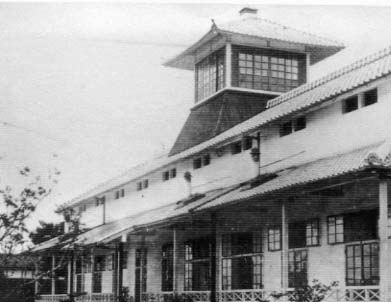
The subtitle of today's workshop is "Major contribution of chemistry and chemical technology towards the sustainable society". We can see a great significance in the similarity between these two slogans, one from Gratama and the other from us 130 years later. Gratama certainly would have had the deep insight to foresee the great importance of today's workshop. In his lecture, Gratama strongly emphasized that the promotion of natural science particularly chemistry and physics were basic and requisite to the development and prosperity of Japan.
The achievement of Seimi Kyoku was immense and invaluable to the development of chemistry in Japan. After listening to Gratama's lecture, Joukichi Takamine, a student at Osaka Medical School changed his major field from medical science to chemistry. Takamine became a pioneering chemist in Japan and discovered the adrenal hormone adrenaline and the digestive enzyme, takadiastase.
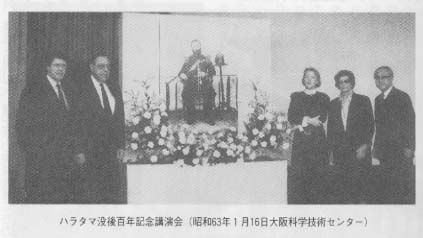
An assistant of Gratama at Seimi Kyoku, Jiro Murahashi, was the teacher of Kikunae Ikeda, who discovered in the extract of seaweed what became the well known seasoning, Ajinomoto, namely sodium glutamate. Ikeda's finding led to the establishment of an amino acid industry in Japan.
Gratama had an important influence on many chemists who contributed to the promotion of chemistry and chemical technology at the dawn of modernization in Japan.
Seimi Kyoku was forced to close down after a short life of three years due to the centralization policy of the Meiji Government. In 1871, Gratama returned to the Netherlands. He later served as a director of the Military Hospital at Den Haag, and passed away in 1888. In 1988, a memorial event was held in Osaka to commemorate the 100th year of his death and to recognize his great achievement.
Today, at this Gratama Workshop, we are very pleased to be able to remember the invaluable contribution of Dr. Gratama to chemistry in Japan and to appreciate his efforts bestowed upon the people of Japan. Gratama's bust to be unveiled is a token of the unforgettable gratitude to Dr. Gratama from the Japanese people.
(Taken from the conference report Gratama Workshop 2000 Japan)
Office of 5th Gratama Workshop
For details, please contact
Dr. Toshiyuki Yokoi
Tokyo Institute of Technology
E-mail: gratama2013@res.titech.ac.jp


